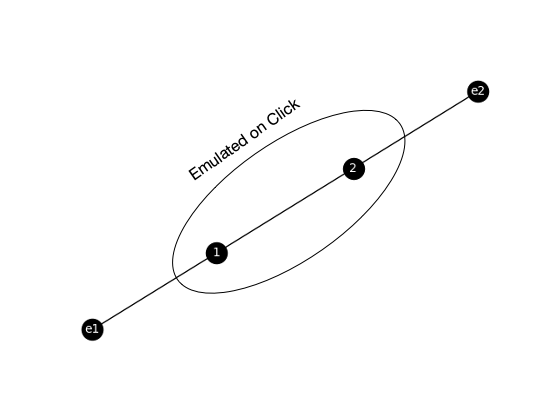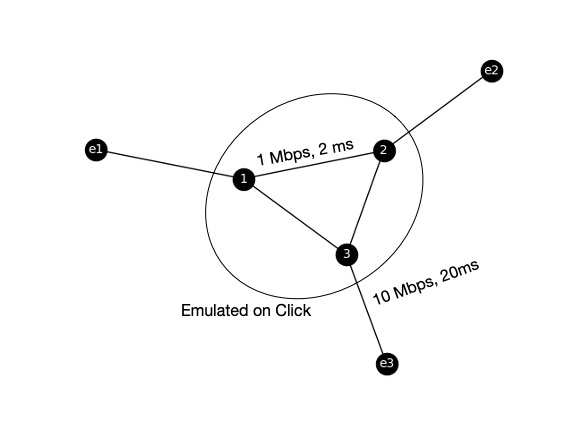Important
This page is deprecated. Please use our new platform and accompanying documentation.
Core Principles of Network Emulation on Deterlab
To use network emulation, you need to represent your topology as a list of edges. Some edges may have attributes, such as bandwidth and delay associated with them. To specify nodes that will not be modeled on a Click router (enclave nodes, usually at the edges of topology) preface their names with the letter "e", like "e1". Nodes that will be modeled on a Click router are denoted by numbers (e.g., 1 2 represents an edge between node 1 and node 2). Attributes for an edge are specified in a json format (attribute: value) following the edge.
For example, the following edge-list file represents a topology of two enclaves (one node each) and two core nodes with some edges between them (no attributes):
# This is a simple edge list
e1 1
e2 2
1 2
The resulting topology is illustrated in the figure below:

Here is another edge list example, which represents a topology with three enclaves and three core nodes. Some edges have defined attributes (in json format) like bandwidth and delay.
# A more complex edge list
e1 1
e2 2
e3 3 {"bw": "10Mbps", "delay": "20ms"}
1 2
1 3
2 3 {"bw": "1Mbps", "delay": "2ms"}
The resulting topology is illustrated in the figure below:

Now please proceed to the tutorial to see how to generate NS files and Click templates from these basic topology models, and validate them on Deterlab.